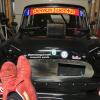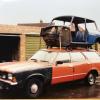Hello there experienced engine builders! Now that I’ve sorted out the primary gear end float (and I have John Guess to thank for some guidance in this regard) I’m looking at refitting the flywheel housing and clutch assembly. Can I just ask if I’ve got things straight in my mind? . . . the driving straps are bolted to the flywheel with a spacer underneath, in my case these are 2mm thick. In operation the diaphragm pushes on the other end of the straps which in turn push the pressure plate away from the clutch plate. The maximum amount of ‘bend’ in the straps can surely only be the same as the thickness of the spacers before they come into contact with the flywheel before being able to go no further. Am I right in thinking that 2mm of movement of the pressure plate is sufficient for clutch disengagement, or am I misunderstanding how the clutch works? Any comments would be welcome. Thanks.
















